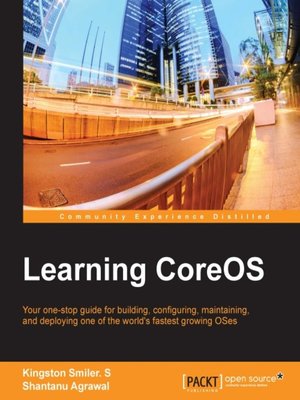
Sign up to save your library
With an OverDrive account, you can save your favorite libraries for at-a-glance information about availability. Find out more about OverDrive accounts.
Find this title in Libby, the library reading app by OverDrive.



Search for a digital library with this title
Title found at these libraries:
| Library Name | Distance |
|---|---|
| Loading... |
Your one-stop guide for building, configuring, maintaining, and deploying one of the world's fastest growing OSes
About This Book
Who This Book Is For
This book is for cloud or enterprise administrators and application developers who would like to gain knowledge about CoreOS to deploy a cloud application or micro-services on a cluster of cloud servers. It is also aimed at administrators with basic networking experience. You do not need to have any knowledge of CoreOS.
What You Will Learn
In Detail
CoreOS is an open source operating system developed upon the Linux kernel. The rise of CoreOS is directly related to the rise of Docker (a Linux container management system). It is a minimal operating system layer and takes a different approach to automating the deployment of containers. The major difference between CoreOS and other Linux distributions is that CoreOS was designed to deploy hundreds of servers. CoreOS immensely helps the users to create systems, which are easy to scale and manage, making life easier for all, be it developer, QA, or deployer.
This book is all about setting up, deploying, and using CoreOS to manage clusters and clouds. It will help you understand what CoreOS is and its benefits as a cloud orchestration platform. First, we'll show you how to set up a simple CoreOS instance with single node in the cluster and how to run a Docker container inside the CoreOS instance. Next, you'll be introduced to Fleet and systemd, and will deploy and distribute Docker services across different nodes in cluster using Fleet.
Later, you'll be briefed about running services in a cluster with constraints, publishing the services already running on the cluster to new services, and making your services interact with each other. We conclude by teaching you about advanced container networking. By the end of the book, you will know the salient features of CoreOS and will be able to deploy, administrate, and secure a CoreOS environment.
Style and approach
This practical guide covers the basics and advanced topics related to CoreOS and lightweight containers. The topics are covered in an easy-to-follow manner with each feature explained in detail, beginning with a brief overview and followed by an explanation of its corresponding configuration files.







